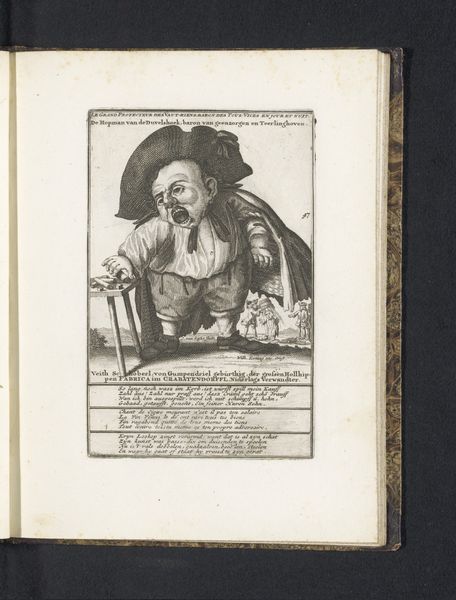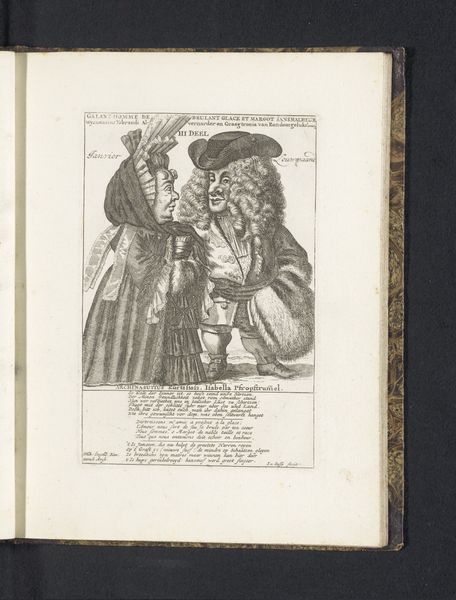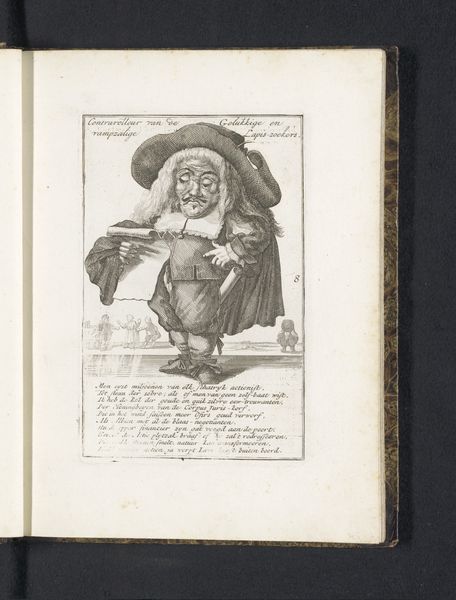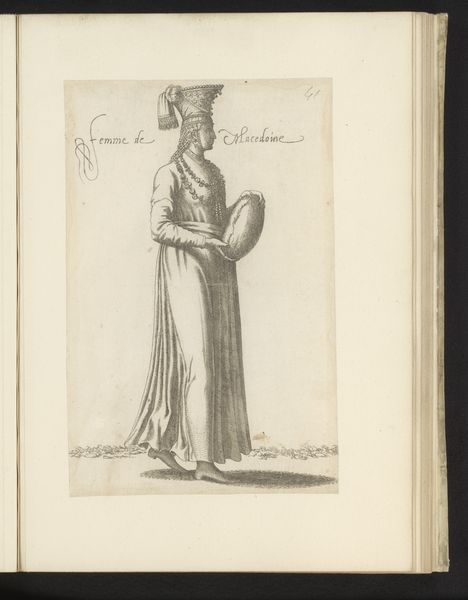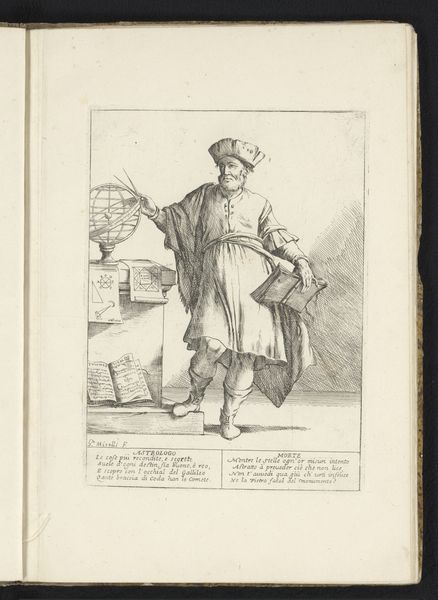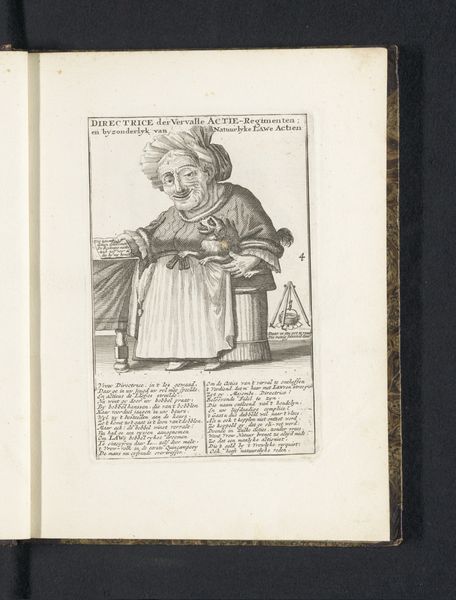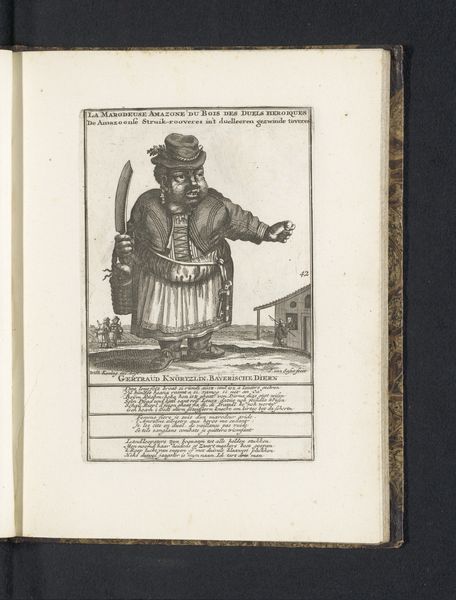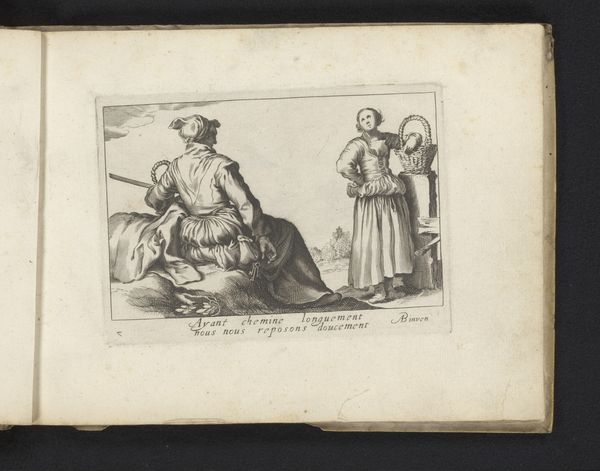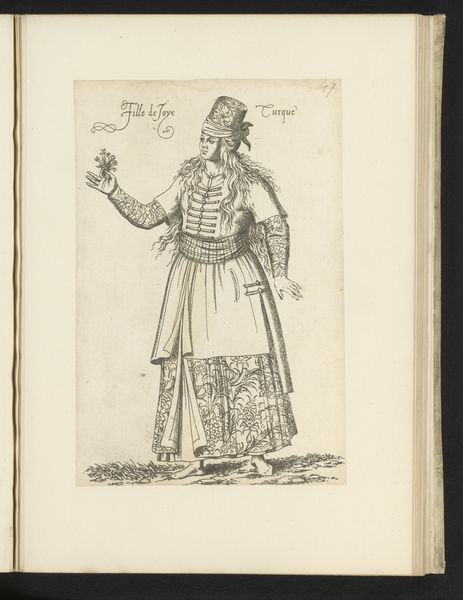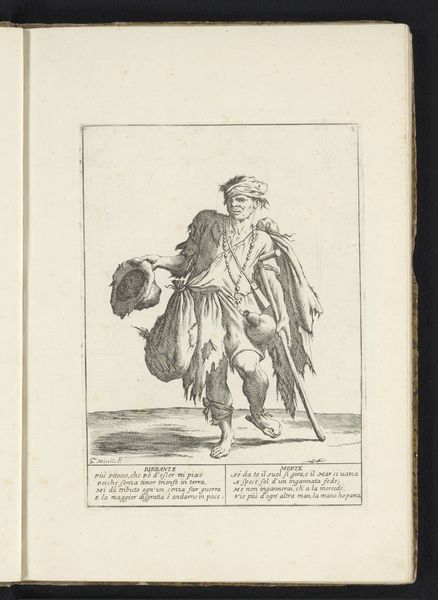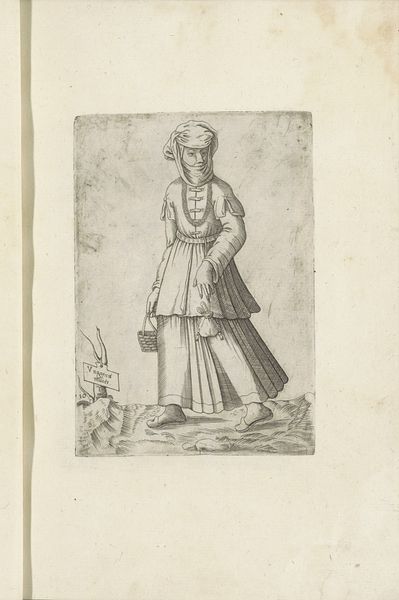
print, engraving
#
portrait
#
baroque
# print
#
caricature
#
engraving
Dimensions: height 169 mm, width 105 mm, height 227 mm, width 170 mm
Copyright: Rijks Museum: Open Domain
Curator: This engraving, dating from around 1718-1720, is titled "De dwerg Hali Nasili Pascha," attributed to Joost van Sassen. The caricature-like depiction caught my eye—there's something both amusing and slightly unsettling about the disproportionate figure. What's your initial take on the work? Editor: It definitely has a peculiar quality. The texture achieved through engraving is interesting. What are the primary formal elements that you observe? Curator: Note the deliberate manipulation of proportion—the oversized head, the dwarfed limbs. This creates a visual tension. Observe how line is used, with delicate strokes defining the texture of the beard and clothing, contrasting with the broader, simpler forms of the body. How does this contrast inform your interpretation? Editor: I suppose it emphasizes the face and the detail there... and, almost satirizes the body by diminishing its presence, drawing all focus to the head. Curator: Precisely. And the monochrome palette emphasizes the formal construction—we are compelled to analyse line and form without distraction. What does that visual hierarchy suggest about its subject and potential function, beyond simple representation? Editor: It definitely lends itself to interpretation beyond the literal, something about power or the importance of appearance versus physical presence, perhaps? Thank you, this has been illuminating! Curator: Indeed, the starkness and structured composition force us to focus on the inherent symbolic and satirical potential of the piece, a lesson in close reading, even within a seemingly straightforward image.
Comments
No comments
Be the first to comment and join the conversation on the ultimate creative platform.
